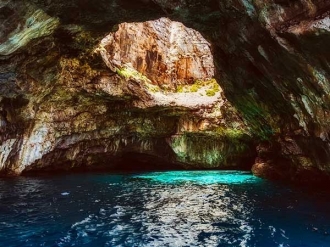With the increase in chaos in life, tourists have started changing their preferences of holiday destinations, the “middle of nowhere” being one of their favorite yet.
Dharamshala, Mussoorie, Shimla, Darjeeling —all summer retreats with colonial charm, the lively mall roads and the expansive sunrise and sunset points. But then they have become too crowded, too familiar and too difficult to book accommodation at. So what does one do?
And it is here that “the middle of nowhere” — a place that might not have made it to the bucket list of many travellers some years ago — comes in. These are newly-discovered destinations that happen to be close to a popular tourist locale or in between two hubs but are hidden and virgin experiences of unseen hillsides. The selling point, of course, is that unlike the well-known ones, these are usually less followed and thus have more solitude.
Manmeet Ahluwalia, marketing head, Expedia, said, “Indian travellers are going beyond the usual boundaries of budget, time and travel — to experience middle of nowhere spots — a trend that has been on the rise from last year to be precise. These are destinations which are usually known best to the locals. They may not be easy to access and do not provide the comfort of commercialised destinations, but the experience is worth the effort.”
And others in the industry seem to agree. Karan Anand, head, relationships, Cox and Kings, said, “Extending your vacations to a secluded or lesser known tourist spot, which is close to the popular travel destination, is a new trend emerging among domestic travellers. People like to just relax and unwind at such destinations instead of a hectic vacation with a lot of sightseeing. For some people, a visit to these places is just an add-on if they have a couple of extra days in hand. Some travellers purposefully add these destinations in their itineraries as they want to make their trip distinct by visiting a place which is beautiful but not much known. Choice of such extended tourist spots also depends on specific interests of a traveller such as birding, wildlife, adventure activities, rejuvenation and so on.”
Besides, who wants to run into hordes of people after running away from crowds? In popular tourist hubs, due to massive crowds, most people do not enjoy themselves. They have to jostle with crowds at restaurants or for tickets while heading out to popular monuments, taking a boat ride or going for a picnic in the park. You do not want to be overrun by others trying to reserve their places.
Talking about the scope of the middle of nowhere tourism, Aditi Balbir, founder and CEO, V Resorts, said, “With each of the 30 states and union territories in India possessing a unique culture, the scope of the middle of nowhere tourism is massive. Every state has its own language, festivals, cuisines and art forms and celebrating these elements individually gives this form of tourism its diverse scope.”
George Muthoot George, managing director of Muthoot Leisure and Hospitality Services representing Xandari Resorts, said, “Travel is becoming more popular by the day and with people increasingly posting their photographs on social media or blogging about their travels, they prefer to head out for genuine offbeat experiences rather than the usual ones.” He quotes the example of Marari, a quaint fisherman village which falls between the infamous tourist destinations of Kochi and Alleppey, which has seen a spike in footfalls. Your unique experience here happens to be the lifeline of the local community, including a day in the life of a fisherman, coir tour, village bicycle tour and the farm to table story.
Activities in the middle of nowhere locations depend on the place. Balbir mentioned, “Each location has its own unique local heritage and the experiences offered to travellers need to be built around these local elements. For example, since Sat Tal is known for its diverse local bird species, an exclusive bird tour with a local ecologist can be done. Experiences focussed on the local flavours are required to bring these locations into mainstream focus.” Sat Tal is one of the few unspoiled and unpolluted places near Nainital which houses an interconnected group of seven lakes with clean, turquoise-hued water. There is a butterfly museum which has over 2,500 butterfly species and 1,100 species of insects that are found in this region. A natural spring of fresh water arising out of the dense oak forest in the west of Sat Tal is also worth paying a visit.
Those who find Coorg too mainstream, immerse yourself in the wilderness at Kabini with its rich variety of flora and fauna. A budding wildlife destination and an ideal place for nature enthusiasts, it offers activities such as jungle safari, trekking and boating. The lush greenery and imposing waterfalls make this place worth a visit. Add to it, the experience of a coracle ride in Kabini river and you have the makings of a perfect holiday.
There is an evident shift towards these locations amongst tourists. “As the popular destinations have become too commercial over the past decade, they no longer offer ‘getaways’ or ‘breaks’ that today’s travellers seek. This is why people are opting for fresher locations. It is the same reason that even for accommodation options, people don’t just look for hotels but for alternate options such as homestays, camps, eco-resorts and more.”
The Northeast, which is now opening up to mainline tourists too, has many such jewels. For example, nature lovers of an aquatic nature need to visit Tamdil Lake, which is around 85 km from Aizawl, a natural pond deep in the forest that’s as emerald still as it can get anywhere in the northern Himalayas. Then there are the Siju Caves in Meghalaya, situated 132 km from Tura, and located in the Garo hills. This cave is one of the longest in the Indian sub-continent. Certainly, an exciting place for tourists seeking adventure, especially since most of the cave is still unexplored and has several passages similar to that of a maze.
For those whose hearts still beat for the hills of Uttrakhand, there is Jilling which is an hour away from the popular summer retreat of Nainital. Relatively unknown, the place has expansive tea estates which are perfect for those seeking to be wrapped in greenery. For those who want to delve deep into the forest, travel no further than Dangamal, a tiny village in Odisha, about 138 km from Bhubhaneswar where one can explore virgin mangroves that are home to Indian saltwater crocodiles.
Salt pans in Gujarat, which make for a surreal visual against the blue sky on the horizon with bursts of mirage, is a natural wonder that has drawn the thinking traveller for the last few years. Due to its proximity to Pakistan, the Indian Army has a base at Rann and all travellers must have valid ID proofs which are checked by the Army official at the entry point. The best time to visit the place is from January to March. One can indulge in activities like camping, trekking, safaris or simply sightsee.
Want to venture further afield? Ditch Sydney or Melbourne in Australia and explore the charms of Cape York, which comprises an array of the middle of nowhere destinations such as the historic town of Cooktown, remote Savannah and rainforest clad national parks — really the last frontier of Australia. From the Coral Sea to Great Barrier Reef, this remote part of Australia is captivating with flourishing wildlife, cultural experiences, characters, and adventure.
Another option is the Faroe Islands in North Atlantic, close to Scotland. The Faroe Islands are located at one of the most remote places in Northern Europe. Watch a a jaw-dropping waterfall as it cascades down the tiny cliff-top village. The unique landscape and location with pristine air and picturesque surroundings are a treat for photographers.
Mayuri Ghosh, general manager, sales, Lords Hotels and Resorts, sums it up best. “Social media also plays a major factor here, a picture against an exotic background or perfectly captured panoramas is a fad today. The millennial wants to experiment with everything. From global cuisines and local tastes to unorthodox holidays and adventurous recreations, the millennial is moving away from the traditional beliefs. Work hard but enjoy twice as hard is the motto and if enjoying means doing something and going somewhere where no one goes, then today’s intrepid traveller will do it.”
Writer: Team Viva
Courtesy: The Pioneer








 OpinionExpress.In
OpinionExpress.In















Comments (0)